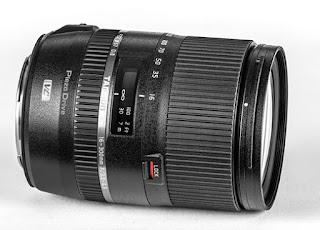Beyond the table top: 5 mini tripods reviewed
With very capable cameras getting smaller and lighter with each iteration, photographers and camera bags have adapted to hold these smaller systems. Eventually, even thatcarbon fiber travel tripod starts to seem excessive. When traveling with limited space and increasing weight restrictions, larger camera support becomes more of an issue. Enter the mini tripod; a class of legs and head that can hold up tiny cameras and flashes, but is also strong enough to provide a stable platform for the same full-sized gear that might otherwise go without support.
In this group review we look at five tripod and head combinations that are larger and more adjustable than the common 'pocket' tripod, but still more packable than a travel tripod. The basic requirements for this group are: can hold up at least 8.8 lbs (4kg) to accommodate many different cameras and lenses; height adjustable so they aren't limited to shooting a few inches off a surface; yet they can be expected to fit inside a mid-sized or smaller bag.
- Joby Gorillapod Focus & Ballhead X
- FLM CP10-A1 & CB-24E head
- Novoflex BasicBall & Ball 30
- ProMaster TTS522
- Sirui 3T-35R
Use the arrows or table of contents below to read each tripod kit review. On the last page, we make a final recommendation.
Joby Gorillapod Focus w/ Ballhead X
$130 / £85 www.joby.com
In 2006, Joby of San Francisco grabbed the tabletop tripod market and twisted it into new shapes with the introduction of its original Gorillapod. Soon after, compact cameras could be wrapped around poles, branches, or even skateboards, before action cameras and phones took over those duties. Today, Joby creates six different, bendable Gorillapods, along with camera straps, ball heads, and a variety of accessories for, yes, action cameras and phones. The Gorillapod Focus is the largest and most capable of the company's tentacled support devices, and is reviewed in a kit with Joby's Ballhead X.
Specifications
| MSRP | $130 |
|---|---|
| Folded length | 14.4" (36.5cm) |
| Maximum height | 11.8" (30cm) |
| Minimum height | 4.9" (12.5cm) |
| Weight | 1.7 lbs (762g) |
| Load limit | 11 lbs (5kg) |
| # of leg angles | --- |
| Angle degrees | --- |
| Warranty | 1 year |
Size comparison
The Gorillapod Focus with the Ballhead X on top is a long and hefty package. Although the legs can be squished and reformed in many different arrangements, the overall packed size is still a relatively gigantic 14.4" (36.5cm) long tube of metal and rubber, that is also 3.6" (9cm) thick. This makes the Joby difficult to pack inside a modest bag for walking about, even if that bag can accommodate a 70-200mm F2.8 lens. This stretches the definition of 'mini-tripod' a bit, but then a Gorillapod isn't easily categorized anyhow.
Available heights*
*Approximate, given the flexible nature of the ball-and-socket legs.
Compared to the original Gorillapod (shown above), the Focus model is more 'giant robot' to the former's 'friendly toy' build quality. The platform and the 24mm balls under each leg joint are made from very solid ABS plastic, while the Ballhead X and the socket for each leg joint are made from well-machined aluminum. The result is a very solid feeling device that is larger than its weight would suggest. The hard, but grippy rubber encircling each joint and the foot-balls, feels equally durable.
The functional result of these relatively hefty parts is three multi-joint legs that do not bend easily at first, but then give way to a slightly more fluid rotation. Slightly sticky is one way to describe how each joint wants to stay in its original position (at whatever angle), which is very good for keeping their overall leg forms in place once set. The side-effect is that it can require a minor feat of strength to get more than one joint to bend at a time, which occasionally makes packing and unpacking the Gorillapod Focus a trial.











